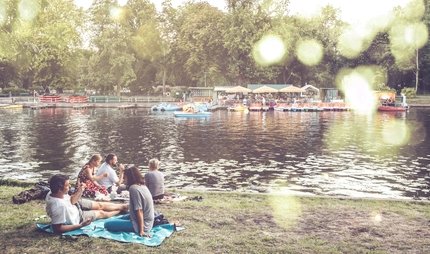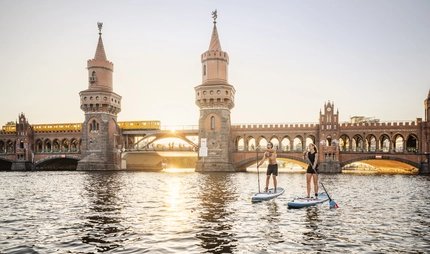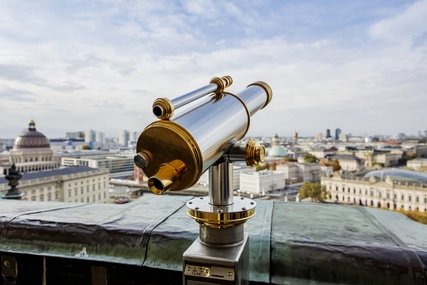
Some immediately catch the eye, others only irritate at second glance: Small curiosities in the middle of everyday life, in the centre of the city. Why do pink pipes run across every second street in Berlin? Why do people in Berlin actually live above a motorway? And what are these abandoned places that nobody seems to use anymore, but which still characterise Berlin's cityscape? We have uncovered them - the secrets of Berlin. Because there's always more to Berlin than meets the eye ...
By the way, on visitBerlin.de we have put together numerous other insider tips for Berlin.
Rabbits on Chausseestraße?
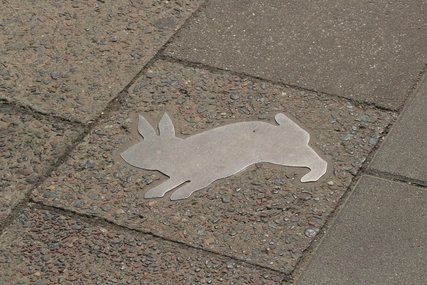
Have you ever noticed the golden bunnies hopping along Chausseestraße in Mitte? The 50 or so brass rabbit plates are already 17 years old. They were placed on Berlin's streets to commemorate the death strip between East and West, or rather: its inhabitants.
The Wall strip was full of life - thousands of city bunnies lived on the sometimes 100 metre wide aisle, which were walled in when the Wall was built. They were able to munch on the grass strip undisturbed for years, safely guarded by border soldiers, high walls and barbed wire fences. In this ecological microcosm, they multiplied so splendidly that they eventually became a plague and their tunnels almost brought down the wall. What followed were poison applications, withered grass and an order to shoot hares. The dramatic story of the wall rabbits is still unforgotten today. The Oscar-nominated documentary film "Wall Rabbits" dealt with their fate in 2009. And even today, the golden plaques on the streets are a reminder of how the Wall changed more than just people's lives forever.
The missing house numbers
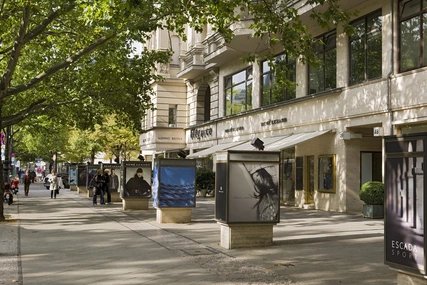
You've probably only noticed this while shopping on Kurfürstendamm if you're looking for a specific house number. House numbers 1 to 10 and 77 to 89 are completely missing. Where have they gone? 1 to 10 fell victim to a street renaming in the 1920s. The fate of numbers 77 to 89 is still unknown today.
Berlin's mysterious "snake"
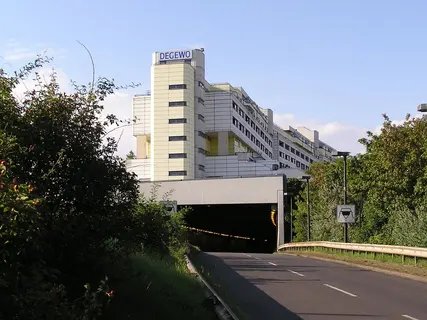
It looks like a typical concrete building from the 70s - but if you take a closer look (or listen), it becomes clear: A real motorway runs underneath Schlangenbader Straße.
The 600-metre-long residential complex was built above the A104 motorway - due to a lack of space in what was then West Berlin. Over 2,000 flats, terraced houses, landscaped courtyards - and underneath, the traffic rushes by, well insulated in a tunnel.
An extraordinary example of urban planning that still attracts attention today. The "Schlange" has been a listed building since 2017. Even though the tunnel is currently being renovated: This building remains a real piece of Berlin's urban history - and perhaps you will take a closer look next time you go for a walk.
Yoga at Berlin traffic lights

Sometimes we Berliners:Inside dreamily at a traffic light, waiting for the light to turn green and looking around. This is the moment when he unexpectedly makes us smile: the Street Yogi. The little man made of cork and shashlik skewers usually sits on street signs and shows us exercises from hatha yoga. It was invented by sports teacher Josef Foos. Today, there are well over 1,000 street yogis in Berlin - and in addition to yoga, they also play football, climb and knit.
Pink tubes in Berlin's streets
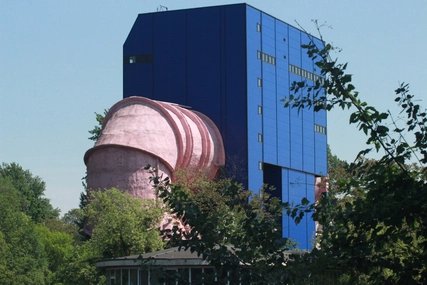
Sometimes we Berliners:inside are also annoyed at a traffic light, wait for the light to turn green and look around. No street yogi makes us smile, but something makes us ponder. Huge pink, sometimes blue tubes hang above many streets. But why are they there? They channel groundwater from construction sites into the Spree. And as there are always construction sites somewhere in Berlin, the pink and blue pipes are very present in the cityscape. And the largest pink pipe is the "TUB circulation channel" at TU Berlin. The pink tube has even become an architectural highlight.
More about architecture in Berlin
Who's that sitting in the Babylon cinema?
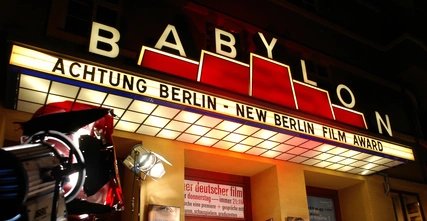
There he sits in the large cinema auditorium of Babylon Babylon, quite far in front and in the middle of the row, taking a leisurely drag on his cigar. It's the legendary Berlin filmmaker Ernst Lubitsch, or rather his statue.
In the 1990s, the figure sat in the Schöneberg cinema Notausgang, which was known for its screenings of screwball comedies and other old films and whose name still makes Berlin cineastes' eyes light up today. After its closure, the statue moved to the Museum of Film and Television and looked out of a window onto the hustle and bustle of the Sony Centre. Now it is back where it belongs - in the cinema.
More about cinemas & film festivals in Berlin
And this quirky building in Steglitz?

And what's the Beer Brush all about? In the centre of Steglitz on the Schloßstraße shopping mile stands a high-rise building in retro-futuristic style. When it opened in 1976 as the Turmrestaurant Steglitz, it was modern and trendy; today its best days are long gone. The 47 metre high tower housed restaurants and pubs, hence the name Bierpinsel. All the tenants have long since left and the reopening is a long time coming. Nevertheless, the former red tower has been shining in a colourful street art look since 2010.

